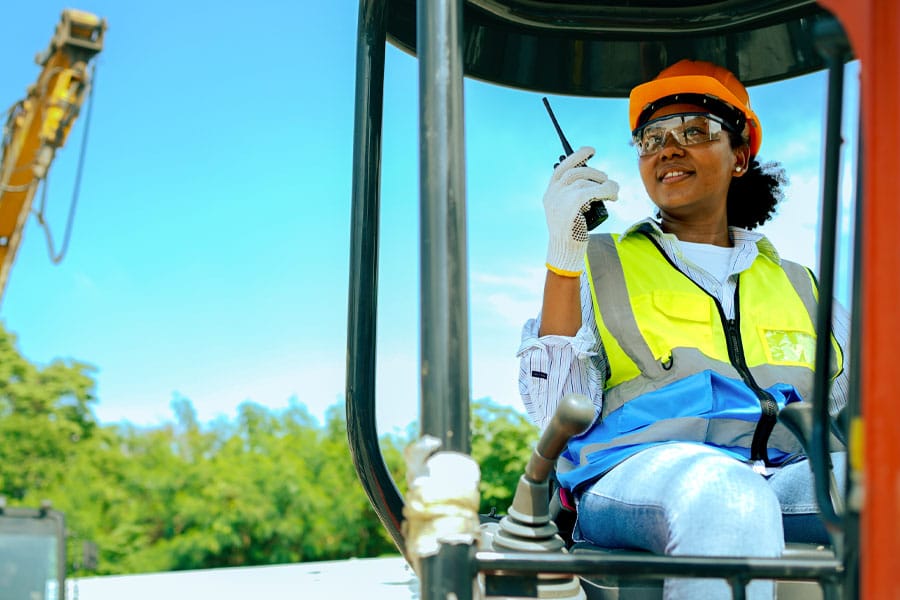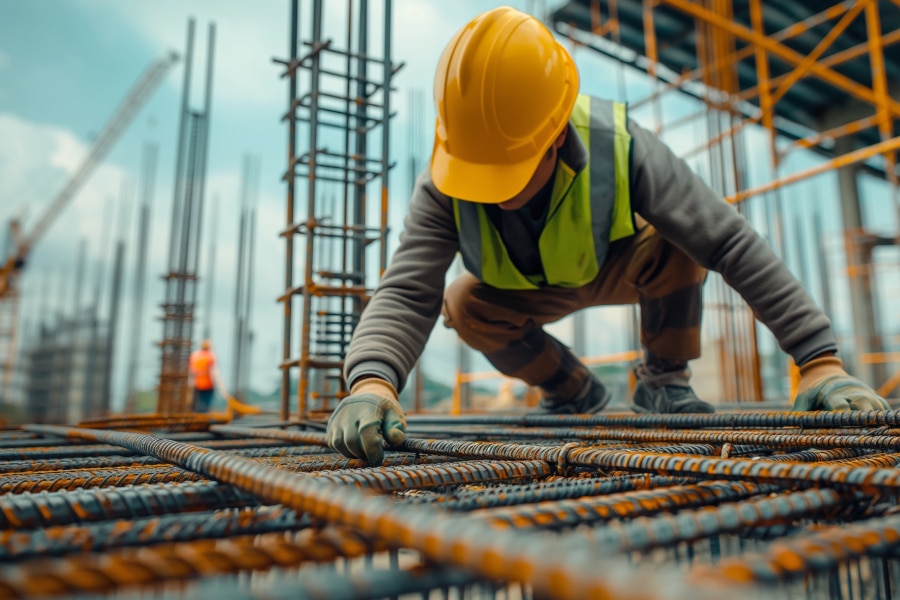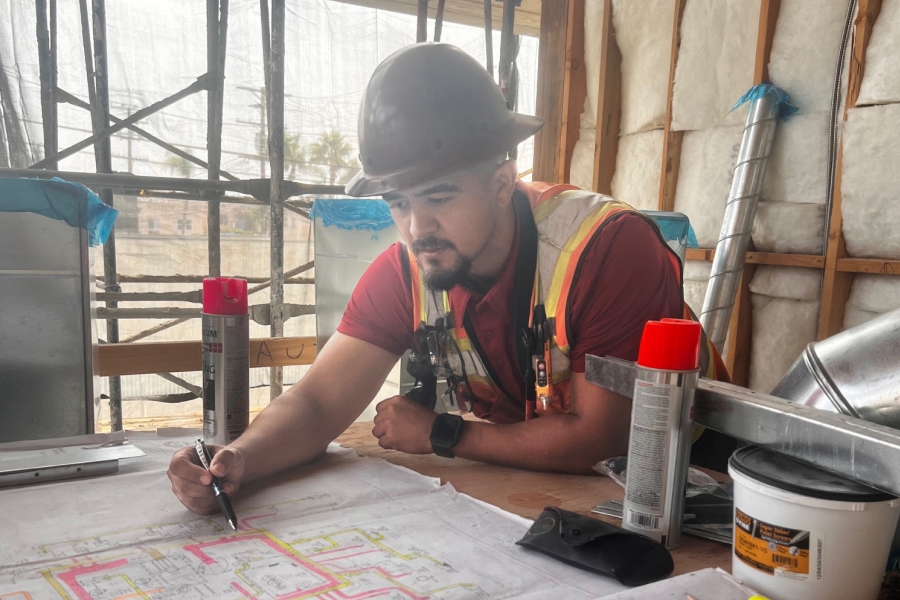In an industry like construction that desperately needs workers, efforts to lure half the world’s population—women—appear to be netting some results.
Between 2016 and 2021, the number of women in the industry in the United States jumped 32%, according to research by the Institute for Women’s Policy Research. Women in Europe also have made some gains, comprising 10% of the construction workforce in 2021, the latest year for which data is available, up slightly from 10 years before, according to Eurostat.
The numbers are worth celebrating, according to Makenzie Plusnick, communications manager for the National Association of Women in Construction (NAWIC).
“In the last 60-plus years, we’ve seen women really putting their boots on the ground, being in every role in construction,” Plusnick said. “It’s really expanded as far as what they’re able to do, what companies will hire them for. And we’re seeing that continue to change and evolve over time. … We’re really seeing that not only women are entering the field, but companies are starting to embrace them and realize the need for change.”
That’s an important turning point in an industry where women still represent a fraction of the workforce and can face stigma and bias, Plusnick said. While the number of US women in construction rose 32% in the past five years, they still make up just 11% of the industry’s total workforce.
Now, not only are there more opportunities for women in construction, but they also are more likely to find supportive employers, ensuring that they aren’t just hired for one job, but encouraged to stay for the next one. “Companies are realizing that they need to put the effort in to get more women,” Plusnick said.
‘Mansplaining’ on the job
Nevertheless, the belief that construction is “men’s work,” or that women aren’t physically capable to work in the industry, still lingers. Most women in the industry are in office jobs; tradeswomen numbered just 3.9% of the workforce in 2021, Institute for Women’s Policy Research data show. “It’s still very much a man’s playground,” Plusnick said.
But times are changing, and Erin Comeaux, project executive at New Orleans-based construction company Impetus, has seen the shift.
When Comeaux graduated from Louisiana State University in 2004 with a bachelor’s degree in construction management, she was the only woman in her class. And in her nearly 20 years in the industry, she’s experienced her share of “mansplaining” from male co-workers who thought they knew more than her.
The last mansplaining episode on the job was about five years ago, Comeaux said. “It was someone who had never worked with me before. And I was like, ‘I know what you’re talking about. You don’t need to talk to me like that.’”
RELATED:
Today, Comeaux is regularly interviewing and bringing on female construction management interns from her alma mater and elsewhere.
The change in attitudes and the spike in interest from young women, Comeaux said, comes thanks in part to the growth of women in the industry over time. Younger women are more likely to see a female relative or family friend in construction. In fact, one of Comeaux’s female intern’s grandmothers works in the industry.
Comeaux also partially credits the rising popularity of HGTV. “Having the women on those shows, flipping houses and being interior designers—that’s fun stuff,” Comeaux said. “Now, what you don’t see in the background is the not-so-fun stuff. But what they’re seeing is the transformation and how intriguing that is.”
At the University of Washington, Darlene Septelka, a teaching assistant professor in construction management with more than 50 years of experience in construction, is seeing similar growth in interest from young women. It makes her hopeful that more will find their way to a career that she’s found immensely rewarding.
“Change takes a while,” Septelka said. “I think the industry is making the right steps.”
Hiring, retaining
While Septelka is thrilled to see an uptick of women in construction, she’s focused on not just hiring them, but retaining them for the length of their career. “I’m going to clap my hands that there are more women employed—that’s great,” she said. “But if the ratio [between men and women workers] doesn’t change, how long are they going to stay?”
As the construction labor shortage only worsens, as many experts predict, here are three ways construction companies can make their offices and jobsites appealing to women for the long haul.
Make it friendly
To combat negative attitudes about women, especially on jobsites, don’t just set up diversity training in your office and expect laborers to attend, Plusnick said. Bring it to the jobsite. “They’re not going to attend a training in the office because they have a job to get done,” she said. “It’s about reaching out there and making those changes.”
Consider their needs
Some companies have been intentional about building workplaces that are welcoming to women. Samet Corp. in North Carolina, for example, launched a parental leave program soon after a female employee asked for it.
Plusnick recommends that companies evaluate their needs—whether it’s new policies and procedures or women-sized personal protective equipment (PPE) and dedicated jobsite restrooms. “Really talk to your employees—not only women, but people of color—about what they see as the big issues,” she said. “It’s going to be slightly different for each company.”
Then, act on the suggestions. “It is key and vital to take action,” she said.
Keep hiring women
Put practices in place to ensure women are interviewed and hired for open roles, Plusnick said. NAWIC offers many resources that focus on hiring and retaining women. One thing Plusnick said companies can do: make sure at least one woman is on the hiring panel when interviewing job candidates.
Ultimately, as the labor shortage gets even tighter and construction demand continues, Plusnick said companies will need to make changes to simply stay afloat. “It’s really easy to fall into that mindset of this is how we’ve done it or, if it’s not broke, don’t fix it,” Plusnick said. “Sometimes you don’t realize that a system is broken until it’s right here in our face.”











